Graphite included gray quartz showing aventurescence
- Details
- Created: Tuesday, 07 January 2020 19:10
Recently, a kind of gray 'sunstone' entered the market, it is offered either as a sunstone, an aventurescent feldspar or the most frequently as an aventurescent quartz included of graphite. The gemstone is reportedly originating from India. A sample, a gray cabochon of 22.43 ct is photographed in figure 1 and was described as quartz with graphite inclusions. The tiny green stains are caused by the polishing powder that filled some surface scratches left by the inclusions that reached the surface during grinding.
Graphite inclusions in quartz are known in some quartz from Brazil (Araçuai, Minas Gerais and Bahia)[1],[3] and Sri Lanka (Kuruwita)[1]. Graphite occurs also in other gems[2] such as spinel (Sri Lanka), tourmaline (Africa), tsavorite (Kenya), zoisite (Tanzania) and diamond. It forms hexagonal or rhombohedric crystals but often seen as platelets. Graphite as inclusion is described to have dull surfaces compared to graphite ore that have a metallic luster. Graphite is found in metamorphic rocks such as gneiss, in charnockites (mantle derived CO2 fluids interact with crustal rocks to form the charnockite where the fluid reduction could result in graphite precipitation) and also in sedimentary rocks. Southern India, especially Tamil Nadu and Karnataka have large graphite deposits.
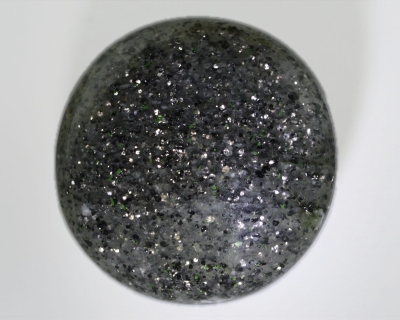 Figure 1. The 22.43 ct cabochon of quartz shows the aventurescence
Figure 1. The 22.43 ct cabochon of quartz shows the aventurescencephenomenon due to a host of black platelet inclusions with a metallic
luster that makes them sparkling.
| Shape | round cabochon |
| Size | Ø 22.0 mm x 6.3 mm |
| Color | colorless but looks gray because of abundant inclusions, has a light yellowish-brown stain in the middle |
| Lustre | vitreous but inclusions have a metallic luster causing light glittering hence aventurescence |
| Weight | 22.43 ct |
| SG | 2.69 |
| RI | ~1.54/1.55 (read from the rounded cab's back by IR reflectifivity) |
| DR | unreadable |
| Pleochroism | none |
| Polariscope / Conoscope | light over 360° |
| SWUV | inert |
| LWUV | inert |
| Magnetic susceptibility N52 | weak, usually quartz is diamagnetic, related to inclusions ? |
| Chelsea filter | inert |
Table 1. Observational and measured properties
The inclusions of the cabochon were photographed and are displayed in figure 2, 3 and 4. There is not much to write except all that is already in each legend. The figure 2 shows some transparent crystals, at the back of the cab, they are more frequent, sometime bigger and they often show fractures or cleavages. These crystals were identified by IR spectroscopy as being diopside crystals, see figure 6.
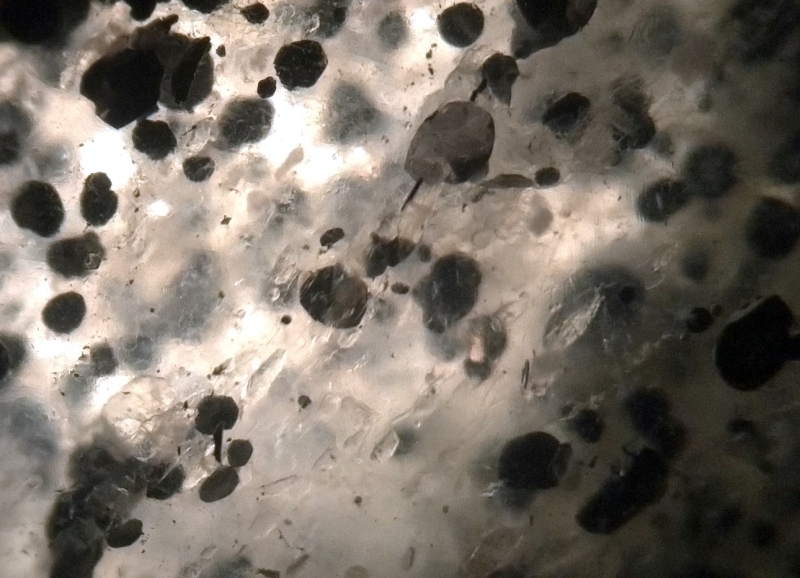
Figure 2. The inclusion scene seen in transmitted light shows numerous black platelet inclusions, some are round sometime slightly
elongated, some are almost hexagonal, and fewer elongated transparent and colorless crystals. Binocular 20x, FOV not calculated.
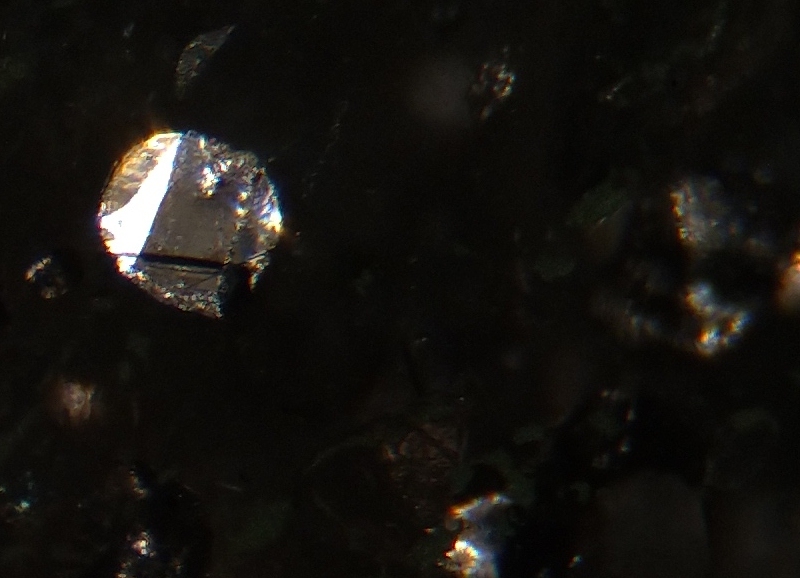
Figure 3. One of the numerous platelet inclusions seen in reflected light, the metallic luster makes the exposure difficult. The platelet
looks like folded following some lines but in fact it seems to be a crystal prism termination with 'embossed' faces. Binocular 40x,
FOV not calculated.
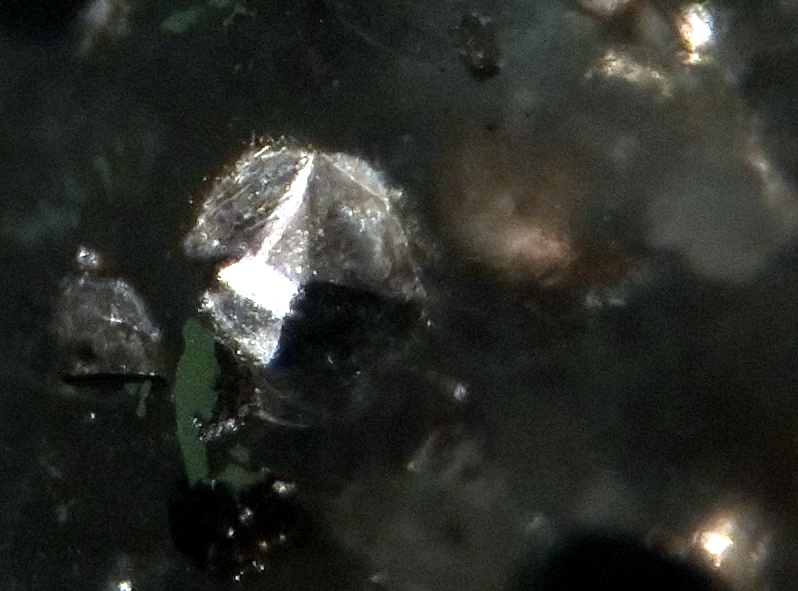
Figure 4. Another platelet inclusion showing an hexagonal section and a prism termination with several faces. The host material showing
some turbidity in some area does not let to capture a clear picture but with the contrast difference, faces edges can be observed with
some relief. The green stain is a residue of the polishing powder. Binocular 40x, FOV not calculated.
Infrared reflectance spectroscopy:
The infrared reflectance spectrum (figure 5) was collected from the top of the cabochon. It unambiguously identified quartz, the pattern in the 500-800 cm-1 range inclined to indicate a crystalline quartz rather than a polycrystalline quartz at first glance. Several spectra were then collected in different orientations to study the anisotropy of the material, they all gave the same invariable pattern, a mono-crystalline quartz would have given spectra with changing features in the 500-800 cm-1 range. The IR bean being wide enough, the reflectance area is wide enough to overlap numerous miscroscopic crystals constituting a polycrystalline material and to get the average spectrum resulting of such material. The cabochon is a polycrystalline quartz commonly known as chalcedony.
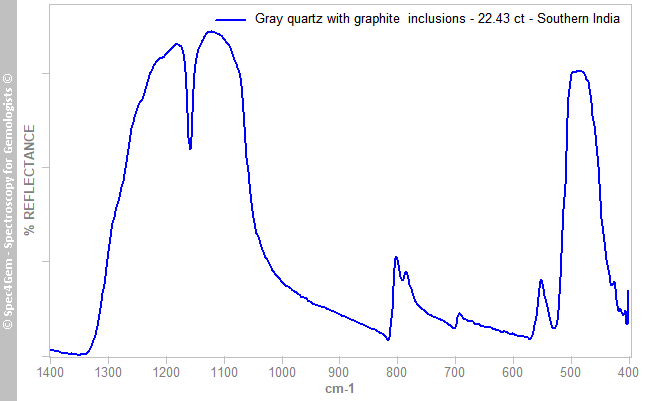 Figure 5. At a first glance, the IR reflectance spectrum of the top of the aventurescent quartz tended to indicate a crystalline quartz rather than a polycrystalline quartz, but several other spectra showed that it is in fact chalcedony, the polycrystalline form of quartz.
Figure 5. At a first glance, the IR reflectance spectrum of the top of the aventurescent quartz tended to indicate a crystalline quartz rather than a polycrystalline quartz, but several other spectra showed that it is in fact chalcedony, the polycrystalline form of quartz.During the search for anisotropy, some spectra were collected from the cabochon's back, few showed a spectrum pattern different of the rest of the cabochon (figure 6). They had extra bands, it was found they matched diopside bands and it was demonstrated by summing the spectrum of a dark-green diopside from Oural (green) with the spectrum of the top of the cabochon (black), the sum gave the spectrum (red) that was fully comparable to the spectrum collected from the back of the cabochon (blue). It permitted at least to identify that the crystal inclusions observed at the cabochon's back were diopside crystals.
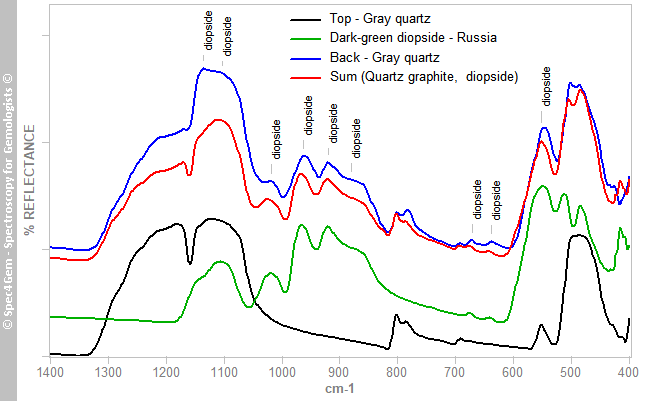 Figure 6. The IR reflectance spectrum of a dark-green diopside from Oural (green) was added to the spectrum of the top of the cabochon (black), the sum gave the spectrum (red) that was fully comparable to the spectrum collected from the back of the cabochon (blue). The crystal inclusions observed at the cabochon's back are diopside crystals.
Figure 6. The IR reflectance spectrum of a dark-green diopside from Oural (green) was added to the spectrum of the top of the cabochon (black), the sum gave the spectrum (red) that was fully comparable to the spectrum collected from the back of the cabochon (blue). The crystal inclusions observed at the cabochon's back are diopside crystals.UV-VIS-NIR spectroscopy:
The UV-Vis-NIR spectrum was collected but was not of special interest, it was decided to not publish it.
Photoluminescence spectroscopy:
The photoluminescence spectra were not collected since no luminescence was observed with the common sources: 254, 370 and 405 nm.
Conclusion:
Such kind of cabochon is unusual and rather new in the market, it is a polycrystalline quartz (chalcedony) hosting graphite inclusions (possible but not verified by the present work) causing the aventurescence phenomenon. The colorless crystalline inclusions were identified by IR spectroscopy as diopside.
[1] PHOTOATLAS of Inclusions in Gemstones Volume 2, E.J. Gübelin, J.I. Koivula, Opinio Publishers, Basel, 2005, ISBN: 3039990292, pp. 579, 605
[2] PHOTOATLAS of Inclusions in Gemstones, E.J. Gübelin, J.I. Koivula, ABC Edition, Zürich, 1997 3rd Ed., ISBN: 3855040958, pp. 161-162
[3] Graphite inclusions in quartz from Brazil, J. Hyrsl, Gems & Gemology, 2004, Winter, pp. 352-353

